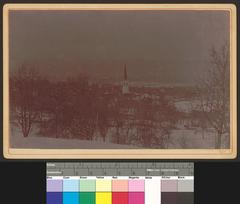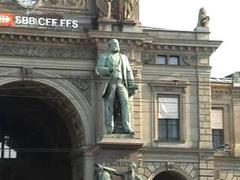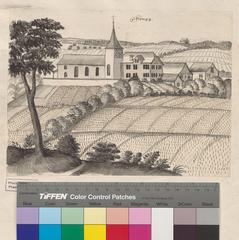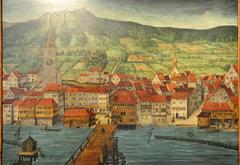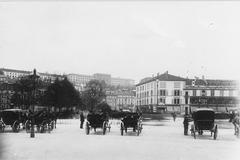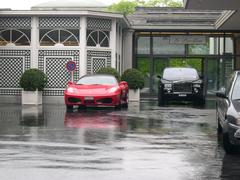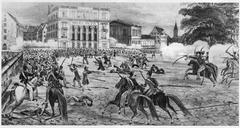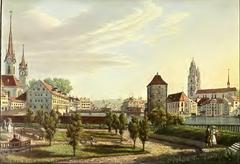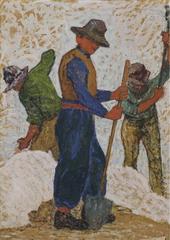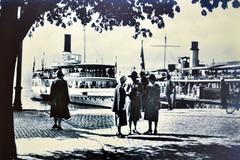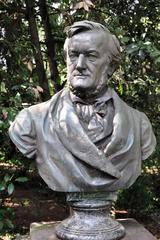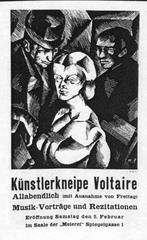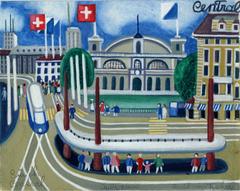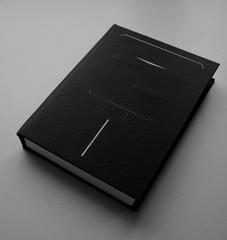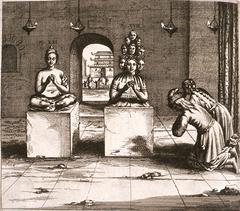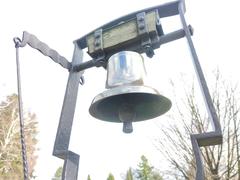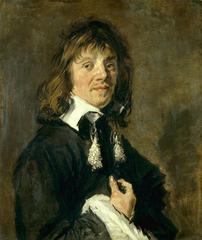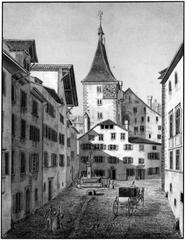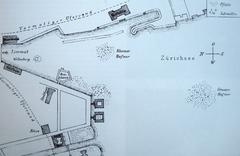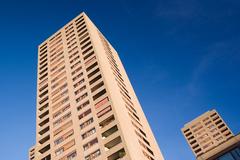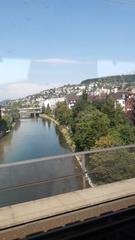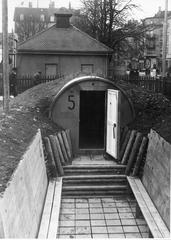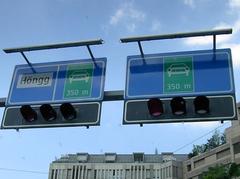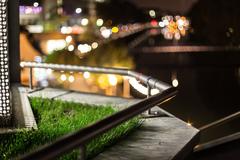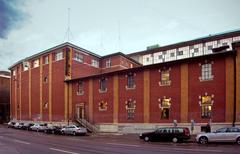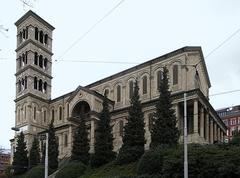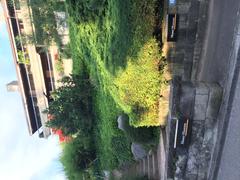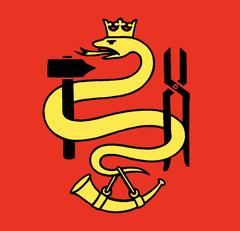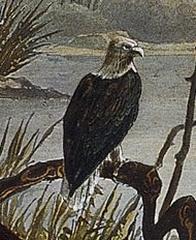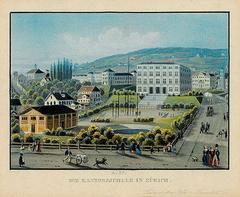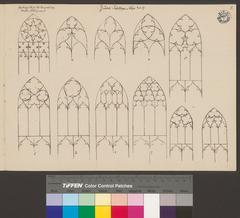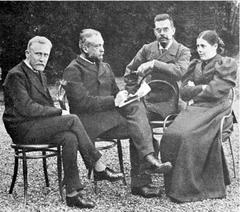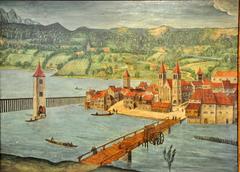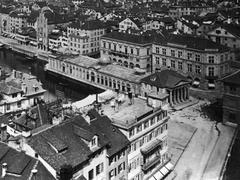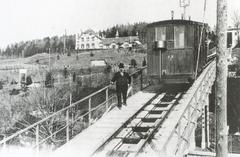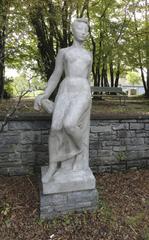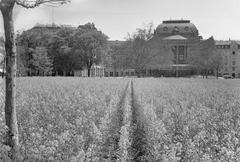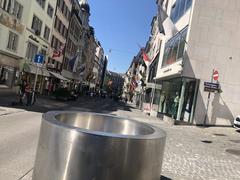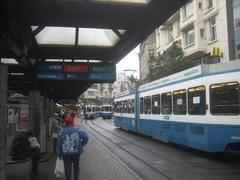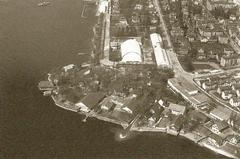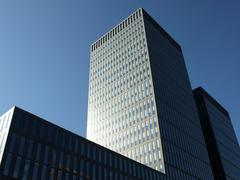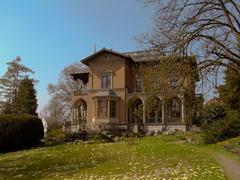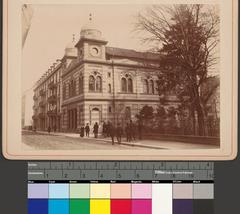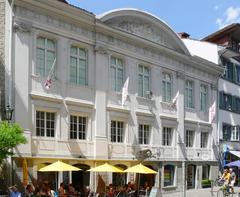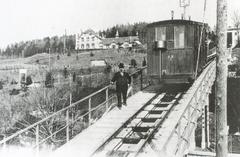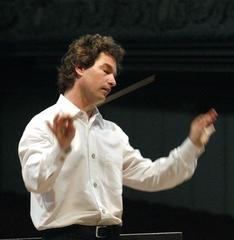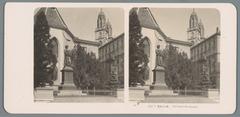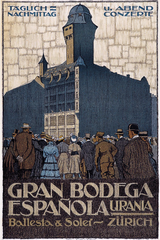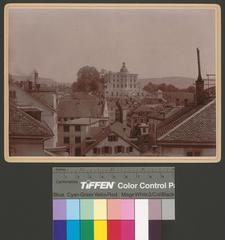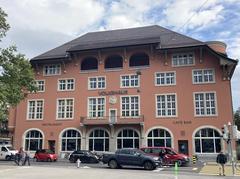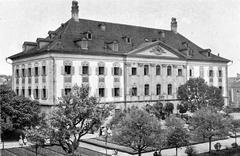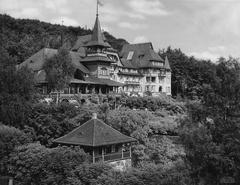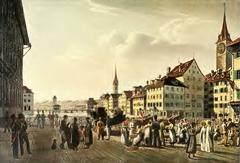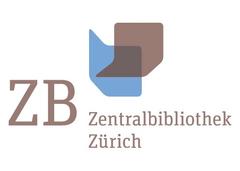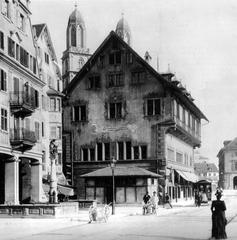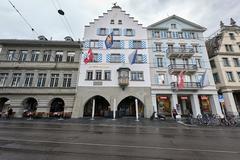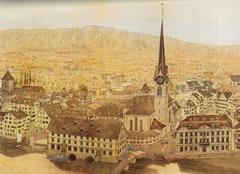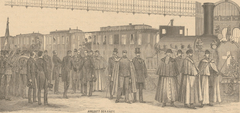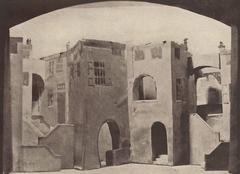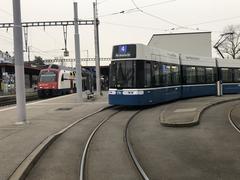Kreis 1 Zurich Visiting Guide: Tickets, Hours, and Attractions
Date: 14/06/2025
Introduction to Kreis 1 Zurich
Kreis 1, also known as Zürich’s Altstadt (Old Town), is the historic core and cultural heart of Zürich, Switzerland. This district encapsulates over two millennia of history, from its origins as the Roman settlement Turicum to its current role as a vibrant hub of commerce, culture, and architecture. Straddling both banks of the Limmat River, Kreis 1’s narrow medieval streets, grand guild houses, and iconic churches create an immersive journey through time, while its contemporary shops, museums, and cafés offer all the amenities of a modern city (swissfamilyfun.com). This guide provides detailed information on the district’s history, key attractions, practical visitor tips, and everything you need to plan an unforgettable visit.
Table of Contents
- Introduction to Kreis 1 Zurich
- Historical Overview
- Urban Structure and Administrative Evolution
- Key Architectural and Cultural Landmarks
- Practical Visitor Information
- Accommodation and Getting Around
- Local Culture, Dining, and Events
- Frequently Asked Questions (FAQ)
- Summary and Final Tips
- Sources and Further Reading
Historical Overview
Roman Origins and Early Development
Kreis 1’s roots trace back to the 1st century CE, when the Romans established the customs post and fort of Turicum atop Lindenhof Hill. Its strategic location at the outlet of Lake Zürich made it a crucial nexus for trade and defense in Roman Helvetia (swissfamilyfun.com). Archaeological remains and informative plaques at Lindenhof offer a glimpse into these ancient beginnings.
Medieval Growth and Guild Influence
During the Middle Ages, Zürich flourished as a fortified city. The Altstadt expanded along both banks of the Limmat River, with the Niederdorf and Oberdorf quarters developing on the east, and the Lindenhof and Rathaus quarters on the west (conviva-plus.ch). The rise of powerful guilds (Zünfte) shaped the city’s economic and political landscape, and their legacy endures in the grand guild houses and the Rathaus (Town Hall), a baroque masterpiece built between 1694 and 1698 (wanderlog.com).
Reformation and Religious Heritage
The 16th-century Swiss Reformation, led by Huldrych Zwingli, made Kreis 1 a center of religious transformation. The Grossmünster, with its striking twin towers, became the movement’s spiritual home, reflecting the period’s emphasis on simplicity and scripture (swissfamilyfun.com). Across the river, Fraumünster’s history as an abbey and its Chagall windows highlight the city’s intertwining of religious and artistic heritage. St. Peter’s Church, known for Europe’s largest clock face, embodies both civic and spiritual significance (zuerich.com).
Urban Structure and Administrative Evolution
Kreis 1 is subdivided into four quarters: Rathaus, Lindenhof, City, and Hochschulen. While current administrative divisions serve primarily statistical purposes, Kreis 1 remains Zürich’s symbolic and historical center. Its population is relatively small—just over 5,500 residents—reflecting its focus on commerce, culture, and tourism rather than residential life (conviva-plus.ch). The district’s boundaries correspond to the city’s limits before the municipal expansions of 1893 and 1934, preserving its historical unity (de.wikipedia.org).
Key Architectural and Cultural Landmarks
- Grossmünster: Romanesque cathedral, central to the Reformation. Tower climb (CHF 5) offers panoramic city views (swissfamilyfun.com).
- Fraumünster: Famous for Chagall and Giacometti stained-glass windows. Free entry, special exhibitions may require a ticket (wanderlog.com).
- St. Peter’s Church: Boasts Europe’s largest clock face. Free entry, open daily (zuerich.com).
- Rathaus (Town Hall): Baroque building, seat of city government, visible from the Limmatquai (wanderlog.com).
- Lindenhof: Hilltop park with Roman and medieval history, open year-round, free access (swissfamilyfun.com).
- Kunsthaus Zürich: Leading art museum with works by Swiss and international artists. Admission CHF 23 (onthegrid.city).
- Opernhaus Zürich: Renowned opera and ballet venue with guided tours.
- Bahnhofstrasse: Prestigious shopping street lined with luxury boutiques and banks (zuerich.com).
- Niederdorf and Oberdorf: Lively east-bank quarters with cafés, nightlife, and boutique shops.
Practical Visitor Information
Visiting Hours and Ticketing
- Grossmünster: Daily 10:00–18:00; tower access CHF 5 (myswitzerland.com).
- Fraumünster: Daily 10:00–18:00; free entry; small fee for special exhibitions.
- Kunsthaus Zürich: Tue–Sun 10:00–18:00; closed Mondays; CHF 23 adults.
- Swiss National Museum: Tue–Sun 10:00–17:00; CHF 10 adults.
- Guided Walking Tours: CHF 15–40; bookable via Zürich Tourism (zuerich.com).
Most churches are free to enter, though donations are appreciated. Tickets for museums and tours can be purchased online or at the entrance.
Accessibility and Travel Tips
- Kreis 1 is largely pedestrian-friendly, though cobblestone streets may pose challenges for wheelchair users. Major attractions like Fraumünster and Kunsthaus Zürich are accessible.
- Public transport—including trams and buses—is fully equipped for disabled access.
- Best times to visit: Weekday mornings or late afternoons for fewer crowds.
- Zürich Card: Recommended for unlimited public transport and discounts on museum entries (Zürich.com).
Accommodation and Getting Around
- Where to Stay: Kreis 1 offers luxury hotels and boutique guesthouses, but prices are premium. Budget travelers can opt for nearby districts such as Kreis 5 or Oerlikon for more affordable options and easy tram connections (Going.com).
- Transport: Kreis 1 is within public transport zone 110. A single ticket (1 hour) costs 4.30 CHF; 24-hour pass costs 8.60 CHF. The Zürich Card offers better value for multi-day stays (In Your Pocket).
- Bike and Boat Rentals: Free bikes available at Velostation near Hauptbahnhof; river and lake cruises depart from Bürkliplatz.
Local Culture, Dining, and Events
- Dining: Try traditional Swiss cuisine at historic guild houses like Haus zum Rüden or Kronenhalle, or sample pastries at Moon Bakery.
- Shopping: Bahnhofstrasse for luxury brands; Old Town alleys for independent boutiques.
- Events: Annual highlights include Sechseläuten spring festival, FOOD ZURICH in October, and festive Christmas markets (zuerich.com).
- Art and Music: Kunsthaus Zürich and Opernhaus Zürich offer world-class exhibitions and performances.
Frequently Asked Questions (FAQ)
Q: What are the opening hours for major sites?
A: Most open between 10:00–18:00; some museums close Mondays. Always check official websites for updates.
Q: Are guided tours available?
A: Yes, walking tours in multiple languages are offered daily and can be booked online.
Q: Is Kreis 1 accessible for visitors with disabilities?
A: Most attractions and public transport are accessible, though some streets have cobblestones.
Q: Do I need tickets for churches?
A: Generally no, though tower climbs and special exhibitions require a ticket.
Q: What’s the best way to get around?
A: Walking is best within Kreis 1; use trams, buses, or bikes for longer distances.
Summary and Final Tips
Kreis 1 is Zürich’s living museum—a vibrant blend of history, architecture, culture, and modern city life. From the Roman roots at Lindenhof to the Reformation at Grossmünster and the luxury of Bahnhofstrasse, this compact district offers something for every traveler. Plan ahead for tickets and tours, use digital resources like the Zürich Card and the Audiala app, and allow yourself time to wander its atmospheric streets, enjoy local cuisine, and take in Zürich’s best views.
Sources and Further Reading
- swissfamilyfun.com
- conviva-plus.ch
- zuerich.com
- wanderlog.com
- onthegrid.city
- conviva-plus.ch
- de.wikipedia.org
- myswitzerland.com
- lonelyplanet.com
- Going.com
- In Your Pocket
- Zürich.com - public transportation
